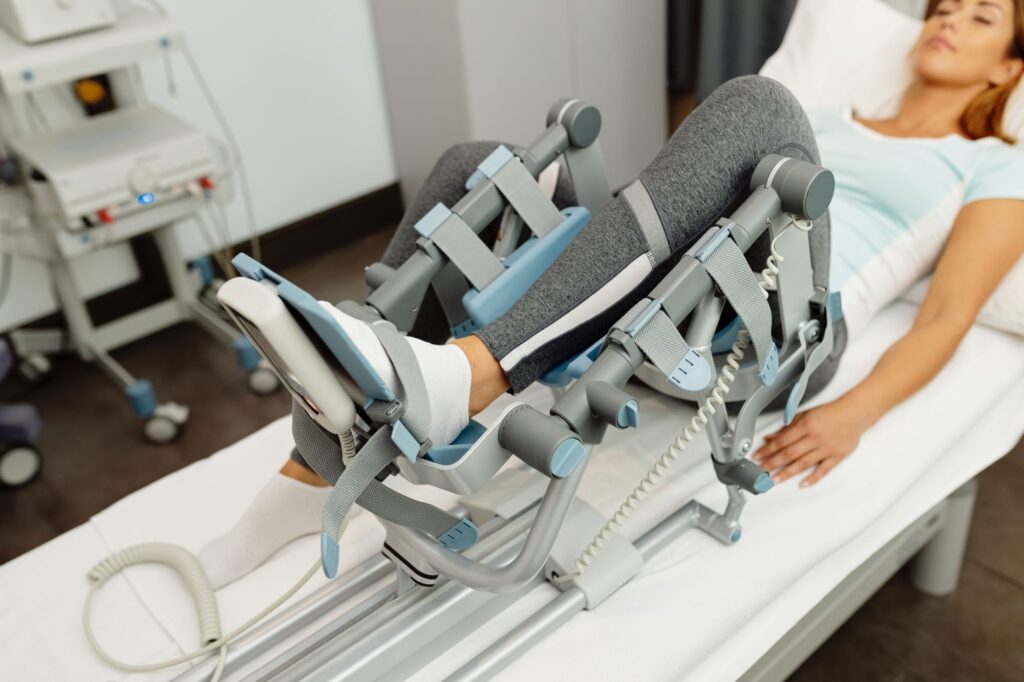Automation is rapidly becoming the foundation of modern industries, paving the way for increased efficiency and effectiveness. The field of physical therapy is no exception, as embracing automation holds great promise for transforming the way therapists deliver care. By integrating automation into their practices, therapists can shift their attention from time-consuming administrative tasks to their core patient care responsibilities, ultimately elevating the overall experience for their clients.
With automation in place, physical therapists are empowered to streamline their workflow and optimize their time. By automating tasks such as appointment scheduling, documentation, and billing, therapists can eliminate mundane administrative burdens and focus on what truly matters: providing personalized and effective care to their patients. This integration of automation allows therapists to allocate more energy and expertise toward solving patient challenges, resulting in improved outcomes and an enhanced patient experience that is centered on their needs and well-being. As the future of most industries leans towards automation, physical therapy stands to benefit tremendously by embracing this technological shift.
Utilizing Automation In Physical Therapy
Physical therapists are finding a powerful ally in automation. Through innovative technology, mundane administrative tasks are simplified and streamlined. From appointment scheduling to therapy session logs, the role of automation in physical therapy cannot be overemphasized.
A significant area where automation has proven beneficial is in physical therapy billing services. Billing can be time-consuming, especially for therapists who manage their practices. With automated billing services, therapists can shift their focus from paperwork to the more critical patient care task. These automated services ensure that claims are processed and sent on time, reducing payment delays. Furthermore, they also decrease errors that might occur when billing is done manually.
Boosting Efficiency Through Automation
One of the main advantages of automation is efficiency. With fewer tasks, therapists can dedicate more time to their patients. Automation can also aid in reducing missed appointments by sending reminders to patients, thereby optimizing therapists’ schedules. In addition, using automated tools to log patient progress can result in more accurate reports and better treatment plans.
Enhancing Patient Care
Automation doesn’t only help with administrative tasks; it also enhances patient care. Therapists can monitor their patients’ progress more accurately through digital tools, providing real-time updates and adjusting treatment plans as necessary. Additionally, automation allows patients to actively participate in their treatment, boosting their motivation and involvement.
Let’s delve a little deeper into these areas.
Revolutionizing Therapy With Digital Tools
Digital tools like fitness tracking devices and mobile apps are increasingly being incorporated into physical therapy treatment plans. These tools provide therapists with invaluable data on their patients’ progress, which can help them modify treatment plans as required. Also, patients can use these tools at home, allowing them to take charge of their recovery.
Encouraging Patient Participation
Patient engagement is a vital factor in the success of any physical therapy treatment. Fortunately, automation can play a key role in promoting this engagement. Digital tools can educate patients about their condition and treatment, encouraging their active involvement. Patients are more likely to stick to their treatment plans and achieve better outcomes by understanding the process.
Moving forward, let’s look at some potential challenges and solutions.
Navigating Challenges In The Implementation Of Automation
While automation offers numerous benefits, its implementation can present some challenges. These include resistance from staff and patients, data privacy concerns, and the potential for technology to malfunction. However, these challenges can be navigated successfully with appropriate training, robust data security measures, and adequate tech support.
Overcoming Resistance
Change can be met with resistance, especially when implementing automation in physical therapy. To successfully overcome this hurdle, it is crucial to emphasize the benefits of automation to both staff and patients. By showcasing how automation can streamline workflows, improve patient care, and enhance operational efficiency, individuals can understand its positive impact on their work and overall experience. Additionally, organizing training sessions can help familiarize everyone with new technologies and address any concerns, dispelling fears or misconceptions that may arise.
Ensuring Data Privacy
As automation brings the handling of large volumes of data, maintaining patient information privacy becomes imperative. Implementing secure systems and protocols is crucial to protect sensitive data. Regular audits are vital in identifying potential security risks, allowing for prompt remediation and proactive measures. By prioritizing data privacy, physical therapy clinics can maintain the confidentiality of patient information, ensuring their trust and compliance with privacy regulations. Secure systems and ongoing monitoring provide patients and healthcare providers peace of mind, guaranteeing that data remains confidential and secure.
Providing Adequate Tech Support
Implementing automation in physical therapy introduces the potential for technology malfunctions, which can be concerning. However, having a reliable tech support system helps address any issues promptly. Dedicated technical support professionals can provide timely assistance, troubleshooting, and resolutions, ensuring minimal disruptions to patient care. By prioritizing adequate tech support, physical therapy clinics can maintain the smooth functioning of automation tools, allowing healthcare providers to focus on delivering quality care to their patients without undue interruption or stress caused by technical glitches.
Improving Compliance With Home Exercise Programs
One significant area where automation has transformed physical therapy is improving compliance with home exercise programs (HEPs). Therapists often prescribe exercises for patients to perform at home, but ensuring compliance can be a challenge. Through digital platforms that offer video instructions and progress tracking, patients are better equipped to follow through with their HEPs. Such tools can send reminders, provide feedback on performance, and allow therapists to monitor progress remotely.
Remote Patient Monitoring
The advent of remote patient monitoring (RPM) technology has significantly impacted the physical therapy field. RPM devices can collect various health data from patients in their homes, including heart rate, blood pressure, and movement patterns. Therapists can then access this data, enabling them to monitor patient progress remotely and make necessary adjustments to the treatment plan. RPM extends the reach of therapists beyond the clinic walls and offers patients the convenience of receiving care from their homes.
Streamlining Patient Intake
Patient intake is another area where automation can improve efficiency. Automating the intake process using digital forms can eliminate the need for paper-based documentation, making the process faster and more efficient. Patients can fill out their information at their convenience before their visit, reducing wait times and allowing for a smoother, more streamlined experience.
Artificial Intelligence In Physical Therapy
Artificial Intelligence (AI) also makes its presence felt in physical therapy. AI can analyze large volumes of data to help therapists make more accurate diagnoses, predict outcomes, and create personalized treatment plans. Furthermore, AI-powered robotics and virtual reality provide innovative ways to engage patients in therapy, making sessions more enjoyable and interactive.
Telehealth Services
Telehealth services are becoming increasingly popular, especially after the COVID-19 pandemic. This form of remote healthcare allows patients to consult with their therapists via video calls, reducing the need for physical visits. Such services are particularly beneficial for patients with mobility issues or those living in remote areas. With telehealth, patients can access high-quality physical therapy services from the comfort of their homes.
Conclusion
So, as we’ve seen, embracing automation in physical therapy can lead to enhanced patient care and increased efficiency. Despite the challenges, with proper implementation and support, the benefits far outweigh the potential drawbacks. The future of physical therapy is undoubtedly automated, with practitioners leveraging technology to deliver superior patient care.










0 Comments